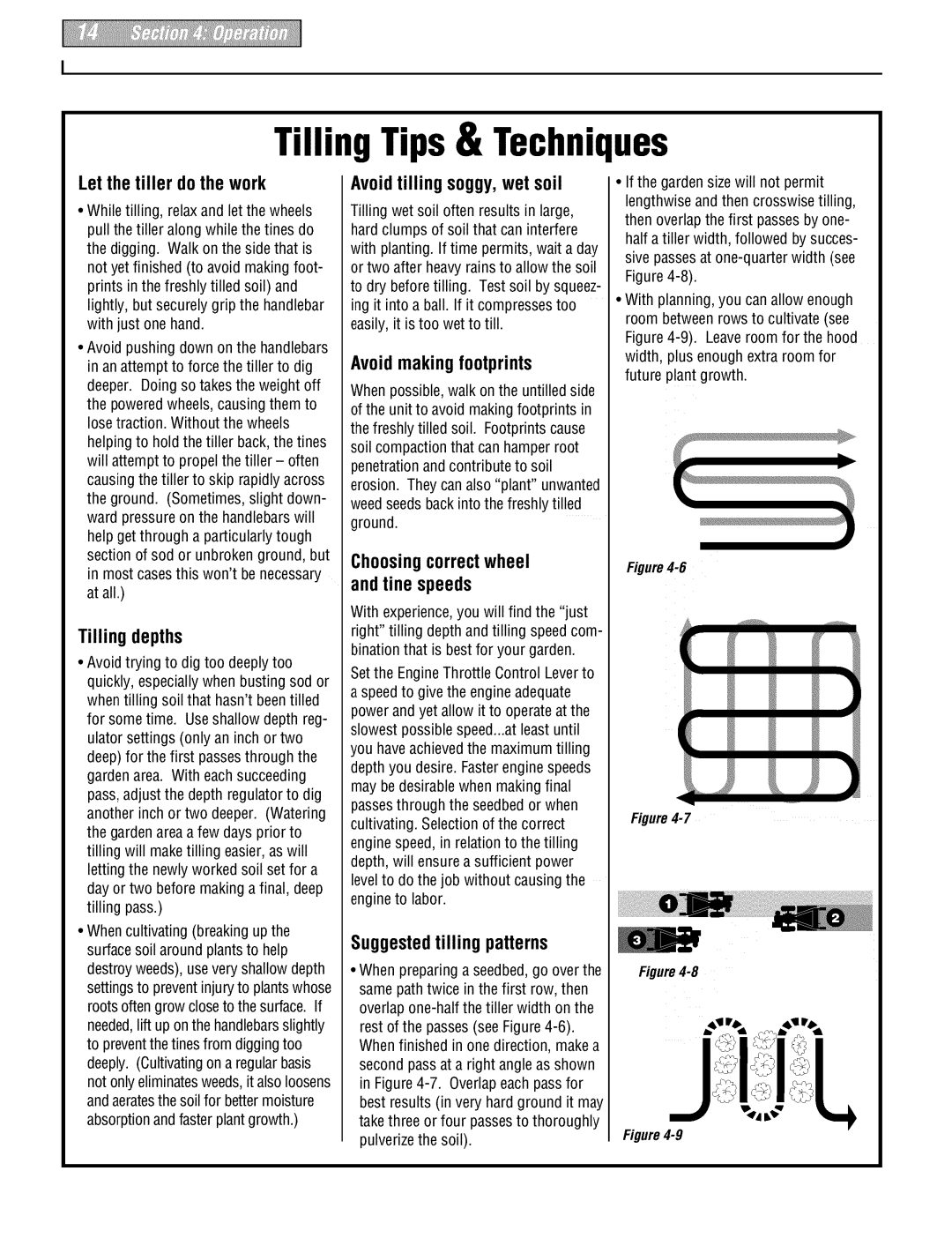E666MM, 664DM specifications
The Troy-Bilt 664DM and E666MM models are well-regarded in the realm of outdoor power equipment, particularly within the segment of garden tillers. Both tillers are designed to deliver exceptional performance, making them ideal choices for home gardeners and landscaping enthusiasts alike.The Troy-Bilt 664DM features a robust 210cc engine that provides ample power for breaking up hard soil and preparing garden beds. Its 18-inch tilling width allows for efficient coverage, making quick work of larger plots of land. One of the key features of the 664DM is its dual-direction tilling capability, which means it can till forward and backward. This innovative design helps to improve soil aeration and allows for a more thorough mixing of soil, compost, and nutrients. With a convenient depth adjustment feature, users can easily modify the tilling depth to accommodate different gardening needs, ranging from shallow tilling for seedbed preparation to deeper tilling for planting.
On the other hand, the Troy-Bilt E666MM goes above and beyond with its innovative features tailored for ease of use and efficiency. Powered by a 270cc engine, this tiller is engineered for heavy-duty tasks and can handle larger areas with ease. It boasts a 16-inch tilling width and a maximum tilling depth of up to 12 inches, making it an excellent option for breaking new ground or revamping existing gardens.
A standout feature of the E666MM is the inclusion of Troy-Bilt’s patented "Power Reverse" technology. This allows operators to effortlessly reverse the tilling direction, reducing the effort required when maneuvering in tight spaces or around garden obstacles. Additionally, the E666MM includes a durability-enhancing cast iron gear case and sealed ball bearings, ensuring a long-lasting and low-maintenance experience.
Both models emphasize user comfort with ergonomic handlebars and adjustable grips, minimizing strain during extended tilling sessions. The easy-to-start engines incorporate advanced combustion technology, promoting fuel efficiency while reducing emissions.
In summary, the Troy-Bilt 664DM and E666MM tillers standout in the garden tilling market for their robust construction, cutting-edge technologies, and user-friendly characteristics, making them suitable choices for both novice and experienced gardeners looking to elevate their outdoor gardening projects.

